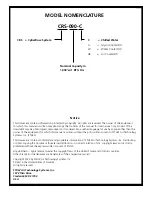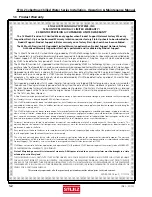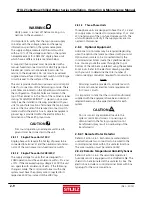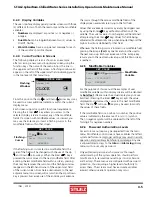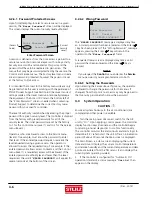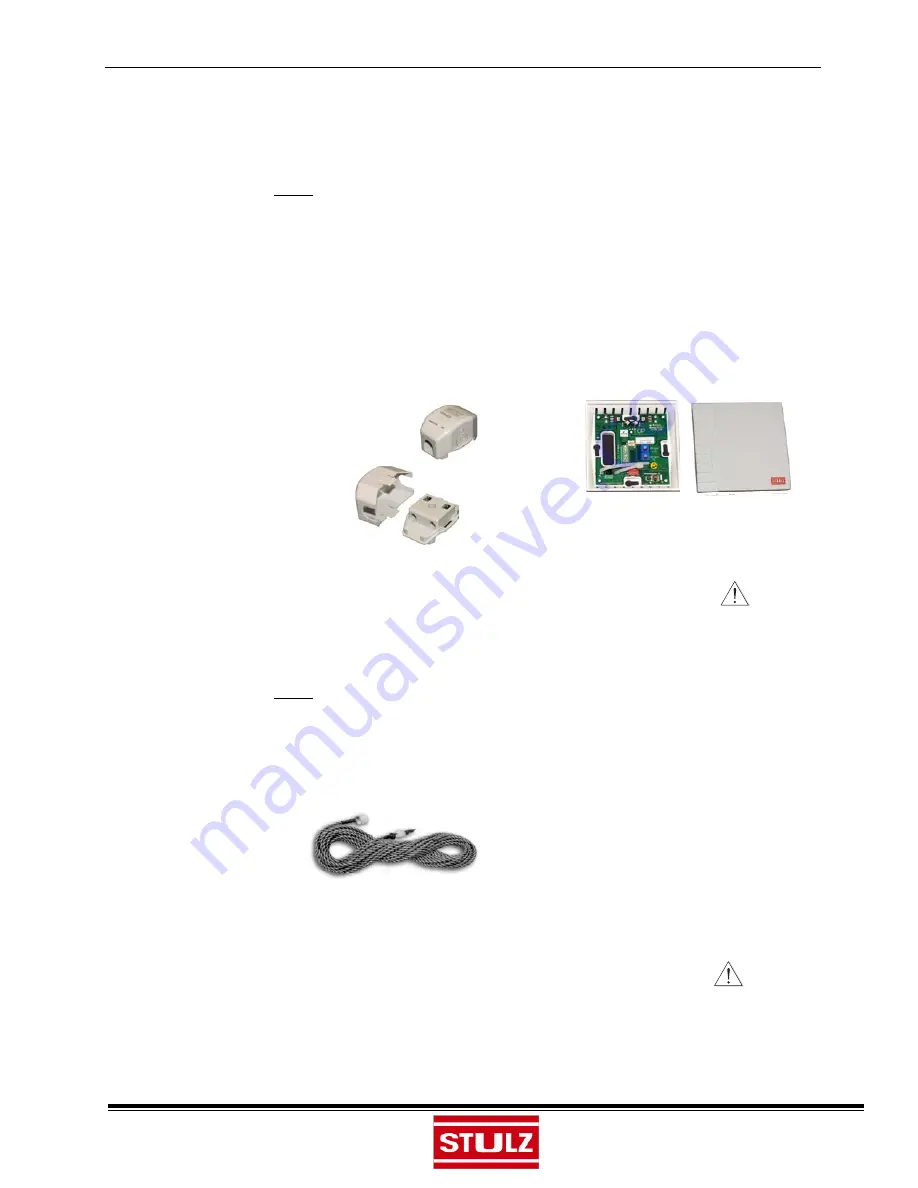
STULZ CyberRow Chilled Water Series Installation, Operation & Maintenance Manual
(Dec., 2013)
2-4
2.6 Optional Equipment (Field Installed)
NOTE
Do not mount any optional equipment on the
unit access panels.
2.6.1 Remote Water Detectors
The remote water detector is normally placed on the
sub-fl oor or in a fi eld supplied auxiliary drain pan
located beneath the unit. STULZ provides 2 types of
water detectors:
Spot type water detector-
Remove the protective cover and connect a two
conductor 22 AWG control cable
(customer furnished) to the
terminals in the base. Replace
the cover and place the water
detector(s) on the fl oor with the
metal electrodes facing down. The
base is provided with a mounting
hole in the center which may be
used to secure the water detector
in place.
Run the control wires into the electric box and connect
them to the correct positions on the control terminal
block as shown in the wiring diagram provided with
your unit. When water is present on the fl oor, current
will fl ow between the electrodes.
NOTE
Do not place the spot type water detector on
an electrically conductive surface.
Cable type water detector-
Lay the cable water detector fl at across the sub-fl oor
where water could collect.
Secure the cable every
12-18 inches with J-clips
or cable ties with adhesive
mounting pads to prevent it
from moving when installing it in the airstream. Secure
it at each turn of the cable and when routing it around
obstructions. Do not tie the water detector cable to a
metal fl oor stand or to pipes. When a water leak on
the fl oor reaches the cable, current will fl ow between
the cable wires.
A two conductor wire harness is provided with a quick
connect fi tting on one end. The harness mates to the
fi tting on the water detector and connects it to the
control terminal block inside the electric box as shown
in the wiring diagram provided with your unit.
2.6.2 Remote Temperature/Humidity Sensor
Depending on the type of control selected, the temper-
ature/humidity (T/H) sensor may be factory mounted or
shipped loose for fi eld installation. The remote sensor
must be located in the conditioned space so that it will
properly sense the temperature/humidity conditions to
be controlled. The T/H sensor should not be mounted
near a doorway or an area where it would be exposed
to direct sunlight. When locating the sensor, consider
the length of wire to be used. A 20 foot long cable is
supplied with the sensor. As an option, a 75 foot or
150 foot long cable may be provided. Follow the steps
below to mount the sensor.
Temperature /Humidity Sensor
1. Remove the cover from the base of the sensor by
squeezing it at the top and bottom.
CAUTION
Take care not to damage the exposed tempera-
ture/humidity sensors on the PC board when the
cover is removed. The sensors can be damaged
if handled improperly.
2. Place the base temporarily against the mounting
surface.
3. Level the base. Mark and drill mounting holes
through at least two of the available slotted holes.
4. Run a 3 conductor 22 AWG shielded cable through
the opening in the base, then secure the base with
screws ensuring the word TOP on the PC board is
oriented upward.
5. Make the wiring connections. Refer to Section 2.8,
Utility Connections and refer to the wiring diagram
supplied with your unit.
6. Seal any holes in the wall behind the sensor.
7. Replace the cover plate on the base.
CAUTION
The sensor can be damaged if handled
improperly. Take care not to damage the exposed
temperature/humidity sensor on the PC board.
Do not touch the sensor as this will affect its
accuracy.


